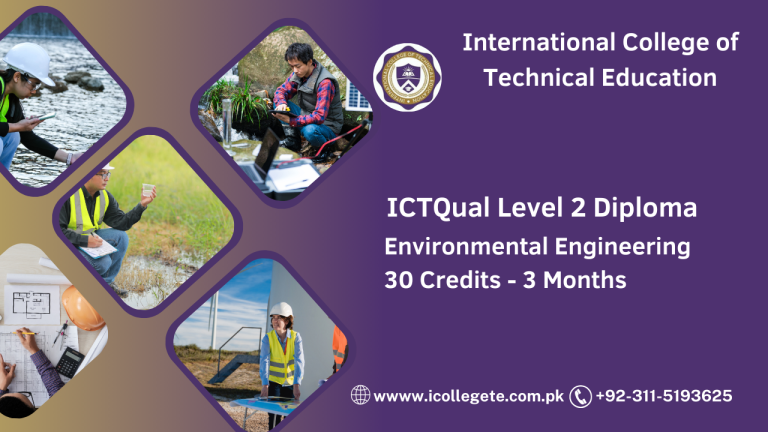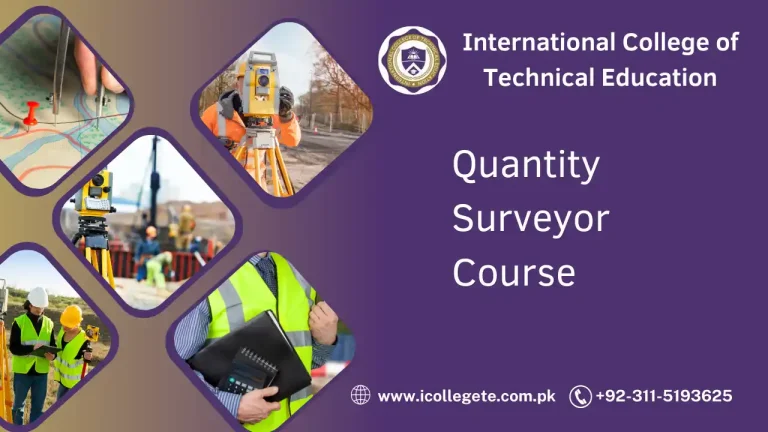Rigging plays a pivotal role in various industries, particularly in construction, oil and gas, manufacturing, and logistics. As lifting operations grow in complexity, skilled riggers who can handle more intricate tasks are in high demand. The Rigger Level 2 Course in Islamabad is designed for individuals who have foundational rigging knowledge and are ready to take their skills to the next level. This course provides a deeper understanding of rigging techniques, safety procedures, and advanced lifting operations, preparing participants for more responsible and independent roles in the industry.
The Rigger Level 2 Course in Islamabad is an intermediate-level program that builds on the knowledge and skills learned in the Rigger Level 1 course. This course focuses on advanced rigging techniques, the safe use of lifting equipment, and working with complex loads. Participants will gain a deeper understanding of load calculations, rigging design, and the handling of various lifting operations, including those requiring specialized equipment. Whether you’re looking to enhance your rigging career or take on more complex tasks, this course equips you with the skills to move forward in your profession.
Course Overview
The Rigger Level 2 Course provides a comprehensive understanding of the more advanced aspects of rigging and lifting operations. Participants will learn to perform more complex rigging tasks with greater autonomy and responsibility. The course covers a range of topics, including advanced rigging equipment, load analysis, and securing different types of loads. Additionally, the course delves into safety procedures, risk assessments, and legal requirements to ensure that participants are equipped to handle all lifting operations in a safe and efficient manner.
The course combines theoretical learning with practical experience, allowing participants to apply their knowledge in real-world scenarios. Upon successful completion of the course, students will be able to work more independently in rigging roles, taking on a greater level of responsibility for ensuring that lifting operations are performed correctly and safely.
Key Areas Covered:
- Advanced Rigging Techniques
Learn the latest rigging methods, including working with complex lifting systems and using advanced rigging hardware. - Load Calculations and Rigging Design
Understand how to calculate the weight and stability of loads and design safe rigging systems for lifting operations. - Securing Complex Loads
Develop the skills needed to secure different types of loads, including heavy, irregularly shaped, and hazardous materials. - Advanced Safety Protocols
Learn to assess potential risks and hazards in lifting operations, and apply advanced safety procedures to minimize these risks. - Inspection and Maintenance of Rigging Equipment
Understand how to inspect rigging tools and equipment, ensuring they meet safety standards and are in good working condition.
By the end of the course, participants will be equipped to handle a wide range of lifting tasks with confidence and expertise.
Study Units
- Advanced Rigging Principles
In this unit, participants will explore advanced rigging principles, including techniques for dealing with large, heavy, or unusual loads. The unit also covers the latest tools and technologies used in modern rigging. - Load Calculation and Rigging Design
This unit teaches participants how to calculate the weight distribution and stability of loads, design rigging systems accordingly, and ensure that the load-bearing equipment is properly chosen. - Handling and Securing Complex Loads
Participants will learn how to handle different types of loads, including those with irregular shapes or hazardous materials, and apply the correct rigging methods to secure them safely. - Safety Procedures and Risk Management
This unit delves into advanced safety measures, including risk assessments, hazard identification, and emergency procedures. It emphasizes the importance of adhering to safety standards during rigging operations. - Inspection, Maintenance, and Troubleshooting
Students will learn how to inspect, maintain, and troubleshoot rigging equipment to ensure it meets the necessary safety standards and is in optimal working condition.
Learning Outcomes
Upon successful completion of the Rigger Level 2 Course, participants will be able to:
- Perform advanced rigging tasks: Take on complex rigging assignments with the confidence to select the correct rigging techniques, tools, and equipment for various loads.
- Design and implement rigging systems: Plan and design rigging systems that ensure the safe and effective lifting of loads, including large and irregularly shaped items.
- Perform load calculations: Accurately calculate the weight, stability, and rigging requirements of different loads, ensuring safety during lifting operations.
- Ensure safety compliance: Implement advanced safety measures and risk management strategies to minimize the chances of accidents and injuries during lifting operations.
- Inspect and maintain rigging equipment: Conduct thorough inspections and maintenance on rigging equipment to ensure its reliability and compliance with safety regulations.
Course Benefits
- Advanced Skillset: The Rigger Level 2 Course equips you with advanced rigging skills, preparing you to handle more complex lifting tasks independently.
- Enhanced Job Opportunities: Completing the Level 2 course opens up opportunities for higher-level rigging positions, including roles with more responsibility and higher pay.
- Comprehensive Safety Knowledge: This course emphasizes the importance of safety and equips you with the tools and knowledge to perform rigging operations without risking injury or damage.
- Practical Training: The course includes hands-on training in real-world rigging tasks, allowing you to gain practical experience and develop the confidence needed to perform in the field.
- Industry Recognition: The certification from the Rigger Level 2 Course is recognized across industries where rigging is essential, such as construction, manufacturing, oil and gas, and logistics.
- Progression to Higher Levels: This course lays the foundation for further advancement. After completing Level 2, you can progress to Rigger Level 3, which focuses on supervisory and management skills for rigging operations.
Who is This Course For?
The Rigger Level 2 Course is ideal for:
- Experienced Rigging Level 1 Graduates: Individuals who have completed the Rigger Level 1 Course and want to expand their knowledge and capabilities in more advanced rigging techniques.
- Construction Workers: Those working on construction sites who wish to take on more responsibility in lifting and rigging operations.
- Industrial and Warehouse Workers: Personnel involved in lifting and handling heavy machinery and materials, especially in warehouses, shipping, and manufacturing environments.
- Rigging Assistants and Trainees: Those who are currently assisting experienced riggers and are looking to upgrade their skills to handle more independent rigging tasks.
- Supervisors and Managers: Construction or site managers who want to develop a deeper understanding of rigging operations to effectively oversee and manage lifting tasks.
This course is perfect for those who want to take their rigging career to the next level and gain the expertise needed to perform more complex rigging operations safely and independently.
Future Progression for This Course
The Rigger Level 2 Course serves as a stepping stone for further advancement in the rigging and lifting industry. After completing this course, you can continue progressing in your career with additional certifications and specialized roles, such as:
- Rigger Level 3: The Level 3 course is designed for individuals who want to step into supervisory roles. It covers rigging project management, overseeing teams of riggers, and ensuring that complex lifting operations comply with safety standards and regulations.
- Crane Operator Certification: For those looking to operate cranes and other lifting machinery, crane operator certifications build upon the skills learned in rigging to handle lifting operations at a higher level.
- Site Supervisor or Manager: With the advanced skills acquired in Level 2, you can transition into leadership roles, overseeing lifting operations, managing teams of riggers, and ensuring site safety.
- Specialized Rigging Courses: After completing Level 2, you may want to specialize in particular areas of rigging, such as offshore rigging, heavy lifting, or industrial rigging, opening up more niche career opportunities.
- Health and Safety Officer: As a rigging expert, you can further your career by transitioning into safety management roles, ensuring that lifting operations comply with industry regulations and safety standards.
By advancing through these levels and certifications, you can increase your earning potential, take on leadership responsibilities, and become an expert in lifting operations.
The Rigger Level 2 Course in Islamabad is an essential next step for those who have completed Level 1 and want to expand their rigging knowledge and responsibilities. By covering advanced rigging techniques, load calculations, safety protocols, and equipment inspection, this course prepares you to take on more complex and independent rigging tasks. Whether you want to progress into supervisory roles, operate specialized equipment, or take on complex lifting projects, this course will give you the skills and confidence to excel in your rigging career.







